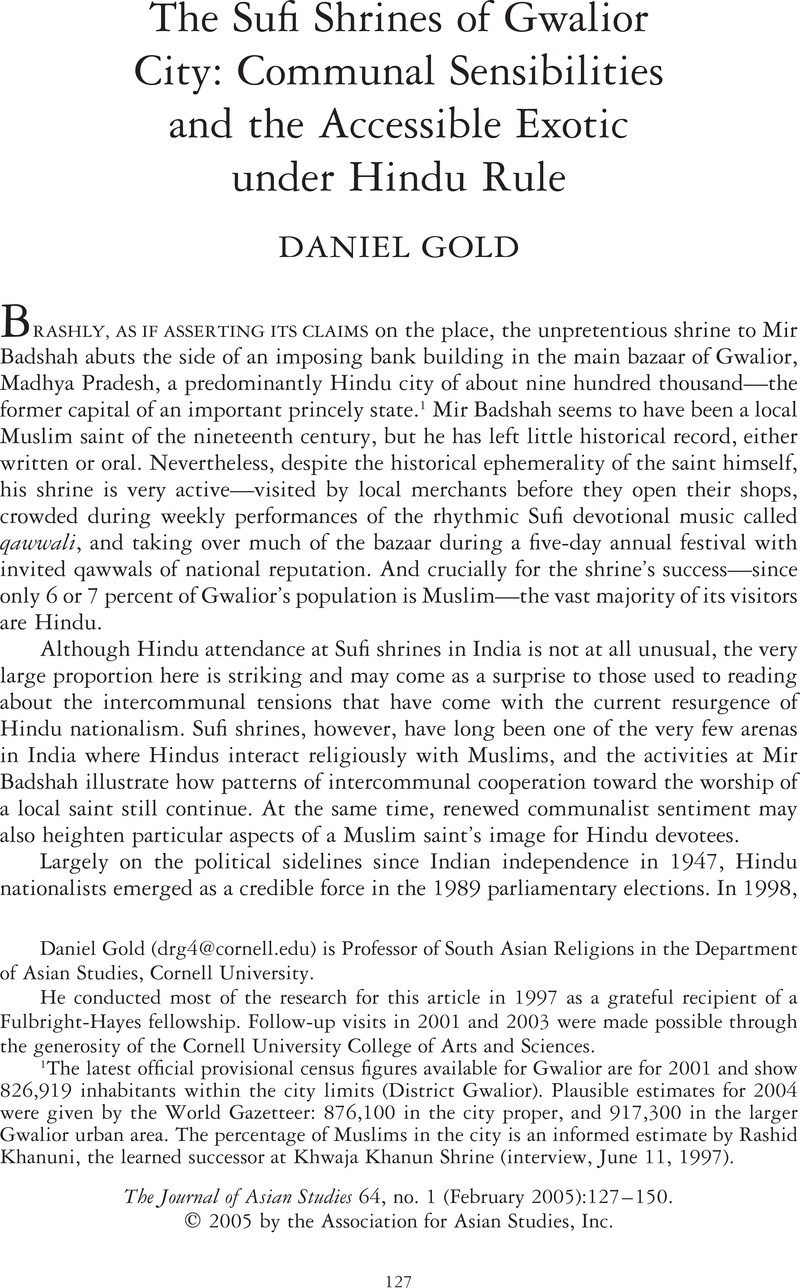Crossref Citations
This article has been cited by the following publications. This list is generated based on data provided by Crossref.
Ghassem‐Fachandi, Parvis
2011.
A Companion to the Anthropology of India.
p.
260.
Parciack, Ronie
2014.
Islamic deshbhakti.
Contributions to Indian Sociology,
Vol. 48,
Issue. 2,
p.
249.
Ernst, Carl W.
2022.
The Wiley Blackwell Companion to Islamic Spirituality.
p.
165.
SINGH, KARAN
2025.
Sacralising Soldier: Dynamics of Collective Memory in Syncretic Shrines.
Revista de etnografie și folclor / Journal of Ethnography and Folklore,
Vol. 2025,
Issue. 1-2,
p.
19.



